Game: UnderHero
Genre: Action, Adventure, Platformer, Role-Playing
System: Nintendo Switch
Developers|Publishers: Paper Castle Games | Digerati
Price: US $16.99| AU $25.50|CA $15.06|£15.29 | €16,99
Age Rating: US T | EU 7+
Release Date: 13th February 2020
Review Code used, thanks to Digerati.
UnderHero is the story of an underling turned hero. You get an insider’s look at the proletarian world of underlings. Their laughably inattentive union cares more about Taco Tuesday than their lives which consist of being treated as expendable by superiors. The game presents the larger politics of villains and the underlings’ subjugation under the supreme-villain: Stitches.
You begin as an underling who broke the mold and decided, instead of just charging mindlessly into an overpowered Hero who would undoubtedly slash him to bits, to drop a chandelier and end the Hero’s journey then and there. You recover the Hero’s sentient sword, which is known to find a hero by fate. She asks you to hide her, so you do.

The traditional linearity of the RPG Hero taking treasures from bosses in order to use them against the supreme villain is reversed. You play both the aide to Stitches, returning the treasures the Hero had won in his journey, while undermining your task by secretly taking on the role of ‘hero’.
You still have to fight your way through worlds and defeat bosses, but whatever expectations you may have about RPG narratives should be left at the door. You embark on a wild ride through a game which I can only compare to the deep pleasure of Golf Story.
The Pre-review
I compare UnderHero to Golf Story, (which you can read about here) not in the way that the games are structured or their genres, but by their way of nesting homage and nostalgia in their irreverence and charm.
If I were to boil down what I believe makes a great game, not just a great game for myself, I think those would be the pairs of qualities I would look for: homage and nostalgia, irreverence and charm.
I’m sorry that what follows became somewhat of a treatise on why and how we should consume games, but I want you to know that I hold UnderHero very close to my heart. It is a great game.
Homage and Nostalgia
Homage and nostalgia are something which newcomers to a genre or series may not pick up on. Homage and nostalgia are rich rewards for players having a vested interest in a genre or series. Yes, in using these elements there is the risk of something bordering on cliche (think “It’s dangerous to go alone! Take this.” Worse, however, is the risk of something being so much of an “in-joke” (or insider’s joke) that a game can only be appreciated by a select audience who is primed or already wise to the use of the reference or trope. Anyone who misses the joke, reference, or trope is left out and their experience can be unsatisfactory.
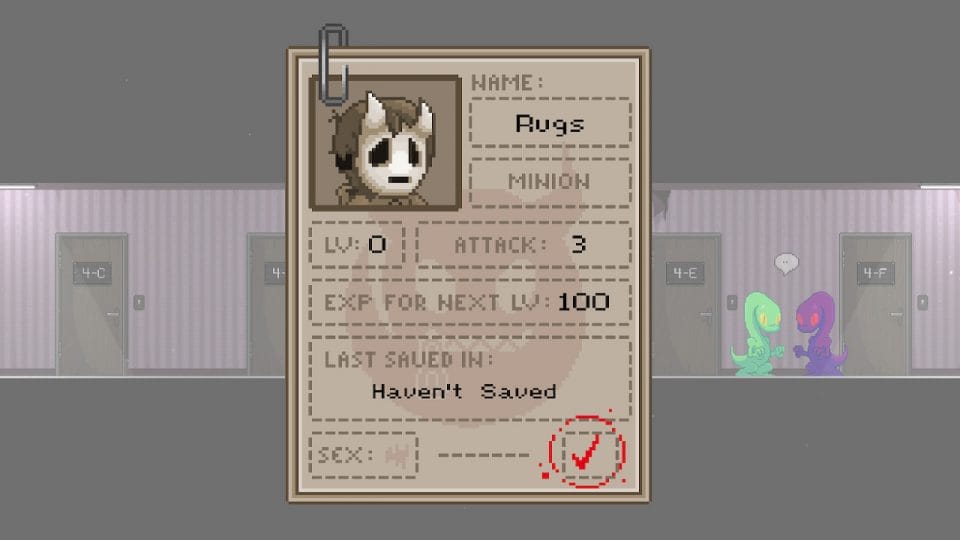
However, there is a middle path in which scenario writer, designer, musician, and game/environment artists work in a concerted effort towards a balance of deep and rich homage and nostalgia to what came before. We have to think of games, at times, as though they’re pieces of music, compositions in which the makers can’t just hammer the same hard notes 24/7 without giving pauses or spaces for the players to have a moments of reflection—nor should they desire to make something unoriginal the proverbial “same old song” that everybody has heard. When we listen extensively to the same genre of music for an extended period of time we begin to recognize that some songs are boring, that we can tell where they’re going and that sometimes we want something which keeps some of the old but has rebellion in its heart.
Irreverence and Charm
Maybe it’s my inner teenager who spent countless hours listening to oi-punk and american-punk records when I was in high-school but I want some rebellion in my music, and I also want it in my games. Which isn’t to suggest that rebellion can’t also become a tired out tune. I certainly did grow out of that music, though I still find myself looking for those elements in any of the other genres I explore (even in my love for classical music).
It turns out, just as in a song, in a balanced situation I want my games to have a spirit of rebellion alive and well. It’s for this reason that I believe irreverence and charm are key factors in a game jumping out of the safety-net of “tried-and-true” and still finding a way to make it on their own. I think they’re the elements behind what we often call “originality” (which is a very unoriginal thing to call something).
We have to narrow in on a game, pick it apart and see how it works and why it feels original and worthy of praise. Because, if we can’t attest for a game under rigorous circumstances, can we really attest for it at all?
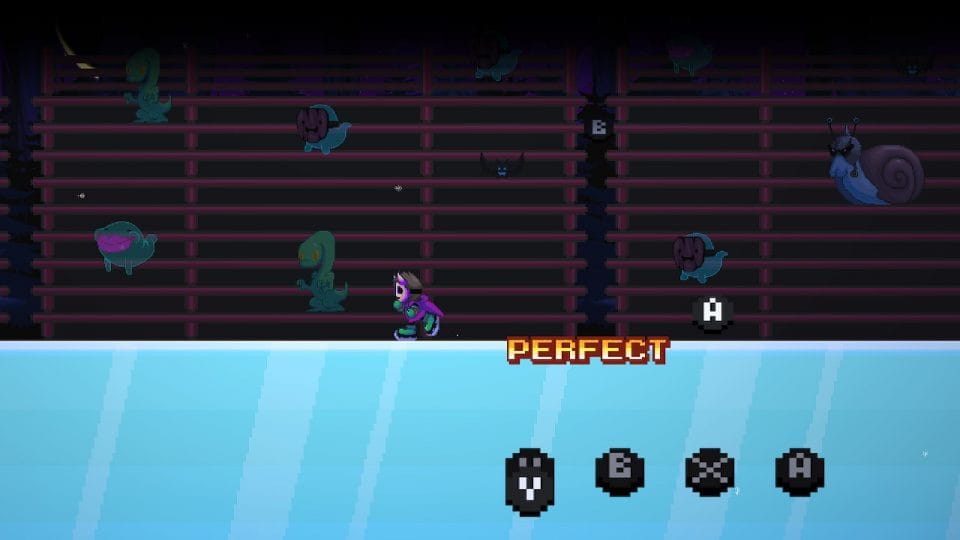
Don’t get me wrong, I know what everyone wants to know: is the game fun or not. But Candy Crush is ‘fun’, many predatory free-to-play/pay-to-win games are ‘fun’ but when we take something apart there is a distinct difference in how or why they’re fun.
Games aren’t just things that were made to be played, they are also made to be made. Anyone who has ever made anything can tell you that at least half the fun, the trouble, the pain and the pleasure is in the making of something.
Likewise, half the fun of playing something is trying to figure out how it was made or why.
The Review
UnderHero, just like Golf Story falls under these parameters. It is both deeply inspired by the games that came before it, its genealogy so to speak, and irreverent and unafraid to turn things on its head. It’s carefully constructed in a way which never feels repetitive. It always has something new to offer in more ways than one.
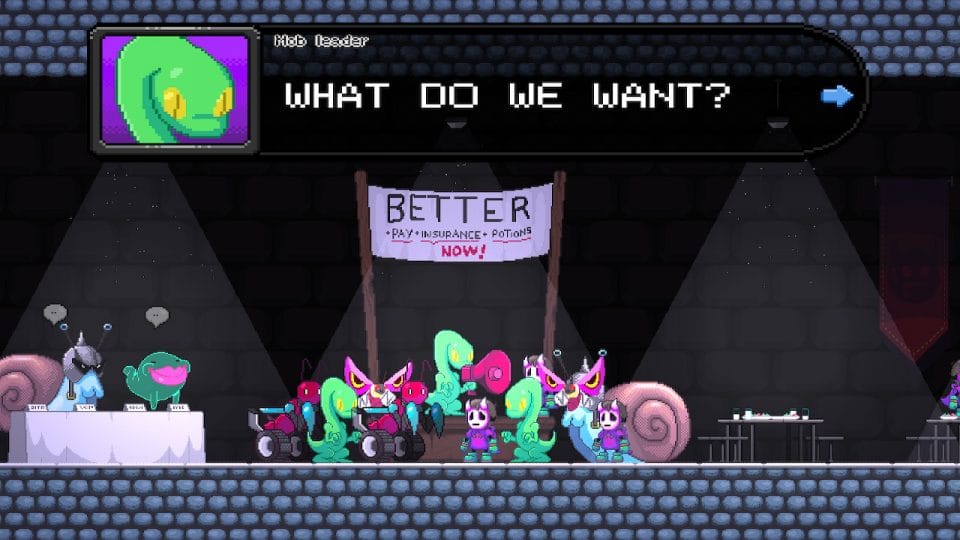
The Soundtrack
The soundtrack for UnderHero is phenomenal. It’s filled with songs which feel vibrant, new, and range from being soothing and mollifying to tense and invigorating. This is coupled with songs which evoke other soundtracks regardless of their origin (there’s one which I distinctly recall sounds like it could be from any of the Donkey Kong Country games). The game blends genres without fear but the songs always feel appropriate to the occasion.
This is wonderful, and the game knows this and showcases the songs; even integrating them into the battle system (more on this in the next section).
You may remember that at the beginning of this review I mentioned that this game shows comedic insight into the proletarian struggles of underlings and their union. Part of this is the dressing-up of save stations as break rooms with clock-in stations, a coffee pot. and some calming bossa nova to relax you: the worker. Each time you reach a new station you have to pay a small fee to the lady running the station in order to use it. You punch-in and your game is saved. The game treats this save area, which is often purely utilitarian in other games, as a place where you can also admire your prized collectibles: the cassette tapes you obtain and unlock throughout the worlds you visit.
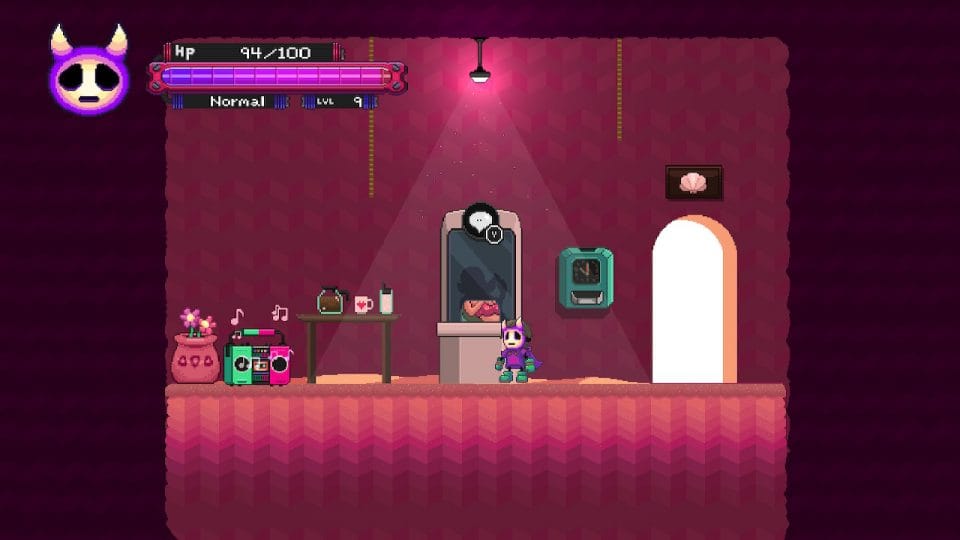
You can play a song in the break-room and enjoy it at full length, as well as listen to variations of some songs. If you want to reminisce on a boss battle, it’s possible. If you want to chill out and cook dinner while a melodic song on harp plays softly in the background, just put on “Somehow, We Survived“. If you want to hear some party music on repeat while you type a review for a game you’ve greatly enjoyed, just put on “The Oblivion Party (Repeat)“. If you grow tired of that put on the wonderfully cheerful “Leaves On Ice“. Or don’t listen to me and play any of the other spirited songs in this game.
The soundtrack for this game doesn’t just feel inspired by video game music but by music as a whole. It feels that the music is made by someone who loves many different kinds of music and takes inspirations without limits from so many different places.
I love this soundtrack.
The Battle System
I’ve thought long on how to describe this battle system. I honestly think your best chance at understanding it would be to go look up some gameplay. I’ve seen many people suggest it is like Paper Mario, and I can genuinely see what they mean. The system involves reading your enemies as they telegraph their next move, your choice of options is numerous and should you choose to attack you can also score yourself some groove points by hitting your enemy to the beat of the song being played. In this regard, especially, it differs from Paper Mario.
I also think the battle system differs from Paper Mario in that it allows you to bribe your enemies with gold coins. After you’ve finished bribing them there’s the possibility of getting new dialogue options from them.
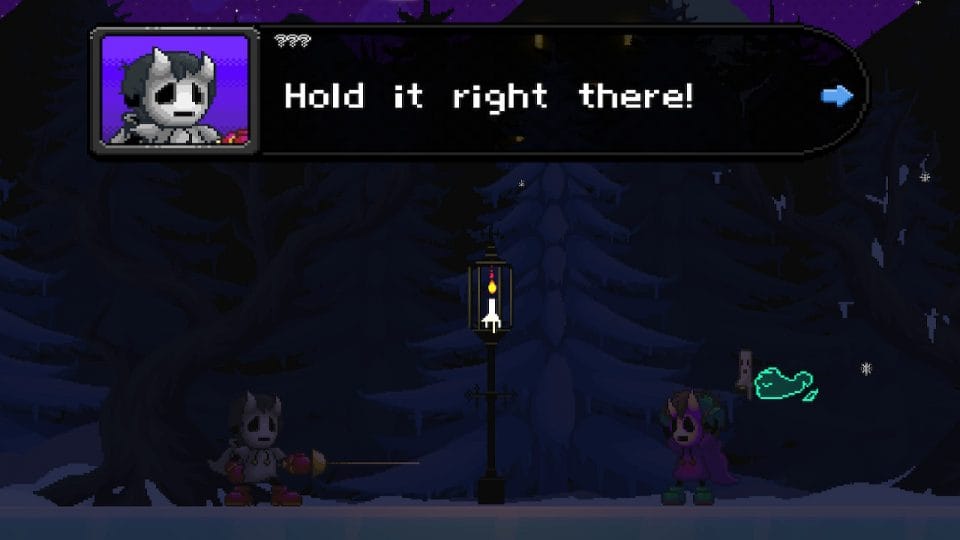
As a quick aside you’ll have to forgive me if I’ve mis-remembered Paper Mario, I haven’t played it in over a decade, but I digress.
The battle system in UnderHero isn’t necessarily challenging but comfortably balanced. Though there are powered up versions of basic enemies you’ll face and those can prove difficult, I think the game really shines in mini-boss and boss battles which often take multiple attempts.
Boss Battles
The boss battles are a balance between the kind of battle system I’ve described as well as featuring a dynamic which requires you to platform out the way of attacks and strategically time when you go in for an attack of your own. It ends up making the battle aspect of the bosses satisfying and worthwhile to overcome, as well as breaking it from the usual battle system and adding texture to the game as a whole.
But there are more reasons to look forward to boss battles, rather than boss battles merely feeling like boss battles, they feel like you’re arriving to the culmination of story points and not just because “the baddy was beat”.
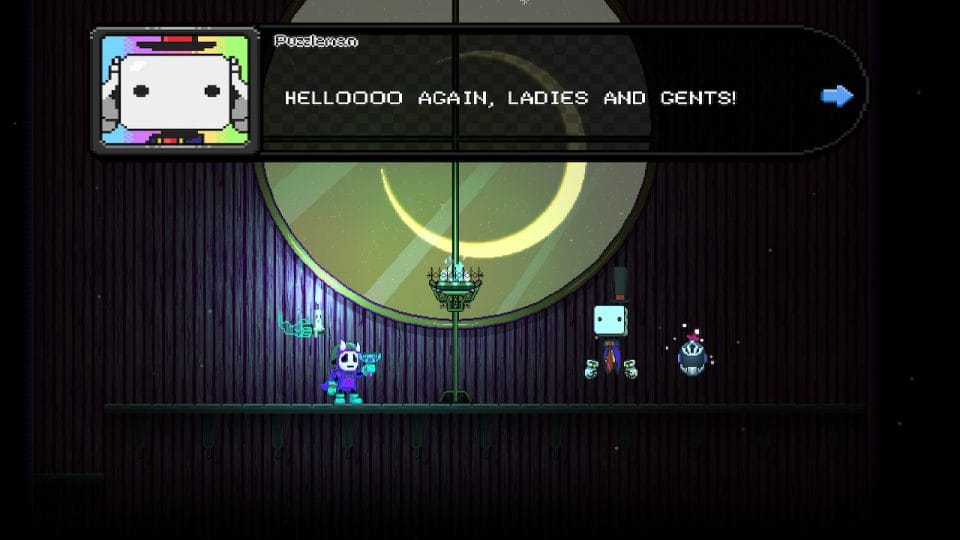
Boss battles are great because, while in other games bosses feel like a checkpoint, in UnderHero the bosses have a lot of backstory. This is very intentional, especially since before every boss battle you get a Yooka-Laylee like quiz about things you would learn about the bosses from dialogue with minions throughout the different realms.
It’s a genuinely interesting way of making you not only interested in the enemies you face, but in the boss as well. It isn’t just relying on the traditional method of lore building by leaving things lying around. You begin to feel out the issues with the villain-dynamic, and discover Stitches’ sinister role in some tragic stories for the bosses who otherwise would feel like nothing more than scripted punching bags.
Humor
The game really busts out its charm with its humor. Of course everyone may have a different sense of humor, but the game had me laughing constantly. The dialogue is witty, it’s great, there’s a mute-ghostly-hand companion which uses profanities which its candle friend refuses to translate. I can’t say too much because I feel I can’t do this aspect justice. However, in terms of scenario writing you do get some great humor as well. Some mini-bosses feel more like mini-games. For example one mini-boss challenges you to a race, a real timed race, while in a different level you find yourself in the middle of an ice-skating competition.

The humor is the deepest part of this game’s charm. It is everywhere, it is referential. While it feels contemporary, it also feels like it belongs to the world of UnderHero. Things being ‘meta’ is ‘in’ right now, but not everything that is meta is actually worthwhile. UnderHero certainly does a great job of utilizing all aspects of its world to the best effect.
Level Design
On my final note I want to briefly bring attention to the level design. It’s well-done beyond what I’ve felt in other indie titles.
To be honest, maps and level design aren’t something I’m usually aware of but I was genuinely intrigued by the way UnderHero structured its levels.
For example. In the first level you have a classic side-scrolling left-to-right overworld. You make your way right and you come across a locked entrance to the Moth Queen’s kingdom (a giant tree). You then realize there are underground sections, and once you make it inside the tree-kingdom your journey goes vertical with the structure of the dungeon being tree-like in its verticality.
In the second world you would imagine that it is the same pattern but you’re greeted by extreme weather which prevents your exploration of the outside world. You go inside a manor for shelter and it soon become clear the the labyrinthine innards of this manor are the meat of the level right off the bat. Just in that decision alone the game refuses to let itself be predictable. I was genuinely delighted at not having to clear another overworld before getting into the fun stuff; once the weather calms down you do have to venture into the overworld. Once you do, the game is abundantly clear in making distinctions to the first overworld in every aspect I can imagine.
Final Verdict
I honestly don’t think I need to give a precursor to my final verdict. However, I do want to make clear, in each of the categories I broke down above, the game performed phenomenally, I didn’t want to hit you, the reader, over the head in each one by saying “and that’s how they subverted that category while still keeping it interesting” but I will say that all of these things culminate into a beautiful and entertaining game which I would play again and again over years to come. I enjoyed it immensely.
Final Verdict: Two Thumbs Up!




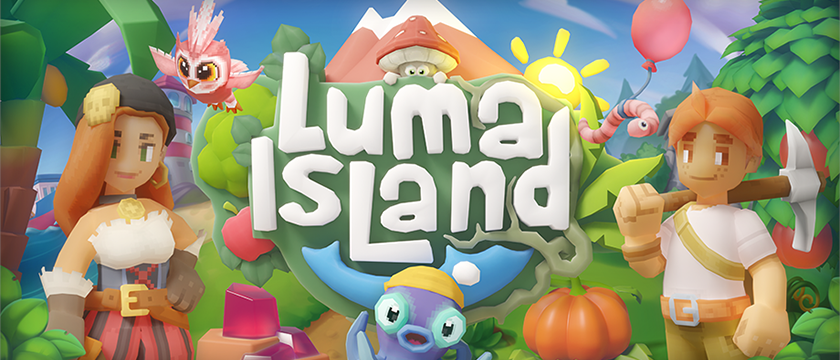


Awesome review. I got this on Steam (PC) and really enjoyed what I played. Always like it when devs trying something different